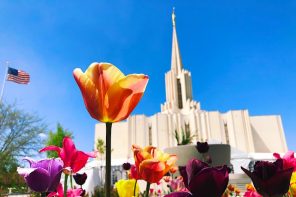Both Elijah Abel and Walker Lewis were black, which meant that they bore the “Mark of Cain” in Mormon theology. Both, however, also held the priesthood and all of its blessings that their descendants were later denied—Abel in 1836 and Lewis in 1843. A statement released last Friday, which includes what RD’s Joanna Brooks calls “the most significant changes made to Mormon scripture since 1981,” acknowledges the existence of these men and their place with respect to Church liturgical rites. The statement also furthered the idea that nobody knows why the ban on blacks existed in the first place, concluding that “Church records offer no clear insights into the origins of this practice.”
June 2013 will mark the 35th anniversary of the lifting of the Church of Jesus Christ of Latter-day Saints’ infamous ban on people of African ancestry, which denied them full participation in Church affairs and priesthood responsibilities. Since the Church’s inception as an organized religion in 1830, generations of mostly white Latter-day Saints have been taught some version of negative white racial frames about black people as spiritually unworthy and destined to be in bondage to white folk due to the “curse” of Ham. It should be pointed out that a version of this belief already circulated throughout European-colonial America and seems to have found its way into some strands of contemporary white mainstream Christianity.
Just as the United States counted black Africans as 3/5 of a human being and treated them as such, Mormons saw black skin as an irreducible sign of God’s disfavor, and thus banned them from full participation. Insular writings by Church authorities lambasted the black experience, blaming black suffering on divine forces rather than white supremacist tendencies.
Yet, throughout the development, refinement, and implementation of those racist teachings, many of which mirror the racism of the time, at least two black men were baptized and ordained to the Mormon priesthood during the time of Joseph Smith, the founder of the faith. Mormon researchers have had this information for quite some time, and some tried in vain to encourage Church headquarters to acknowledge and talk openly about what historians had uncovered.
Racist attacks on the temporal and spiritual destiny of black people in Mormonism was, of course, vicious and condescending, but the polite tone with which they were met as children of God and potential converts was schizoid, to say the least. Along with much of the rest of the nation, the LDS Church has struggled with the presence of blacks, especially the activism of the Civil Rights Movement, which drew sharp criticism from Church authorities with far-right ideas.
The Church has yet to issue a formal apology for its part in the formation and maintenance of racist discourse. Church leaders appear convinced that the 1978 official declaration, which ended 125 years of racial discrimination against black people (beginning with Brigham Young’s statement to the Utah Territorial Legislation in 1852) was enough to silence their critics. With a revelation and the stroke of a pen, white racist traditions ostensibly ceased to exist. Mitt Romney claimed he was overcome with emotion at the announcement of the declaration, which paved the way for R&B legend Gladys Knight, a black Mormon, to join the faith. Racist one day, non-racist the next. Unfortunately, it’s not possible to undo historical patterns of stratification by merely enacting legislation—or by having a revelation, for that matter.
Change is forged, first and foremost, in honest conversation and a deep prophetic understanding grounded in mutual trust of the vicissitudes of the human experience, with all the raw emotion that flows from such meaningful discussion. It’s having the strength and courage to be “transformed by my experience as I have been by yours.”
But there was no wrestling with weighty matters of a history of racist indoctrination. Church authorities merely ended the priesthood ban leaving, in its wake, the membership with the burden of examining their own internal biases. As it has always been in Mormonism, the head speaks and the body follows. The tokens offered yesterday are not enough to silence the demand for human decency, and certainly not enough to end the deep, internalized white racial frames adopted by much of the rank-and-file. Until the LDS Church apologizes, black folk might want to pause when seeing two out-of-place “clean cut”-looking white boys on bicycles in their neighborhoods.




